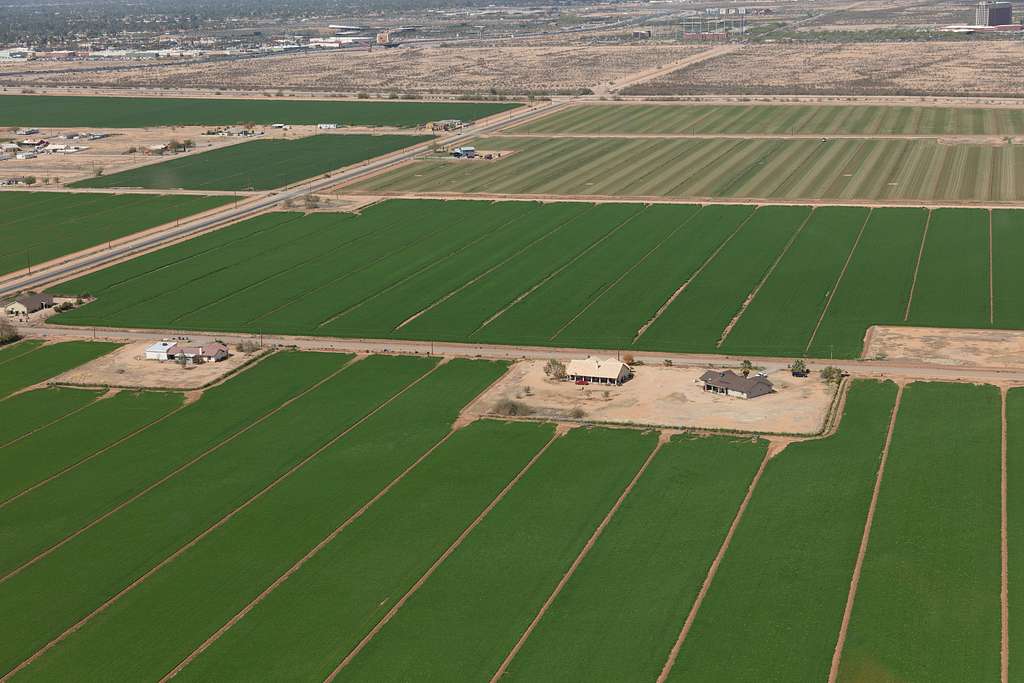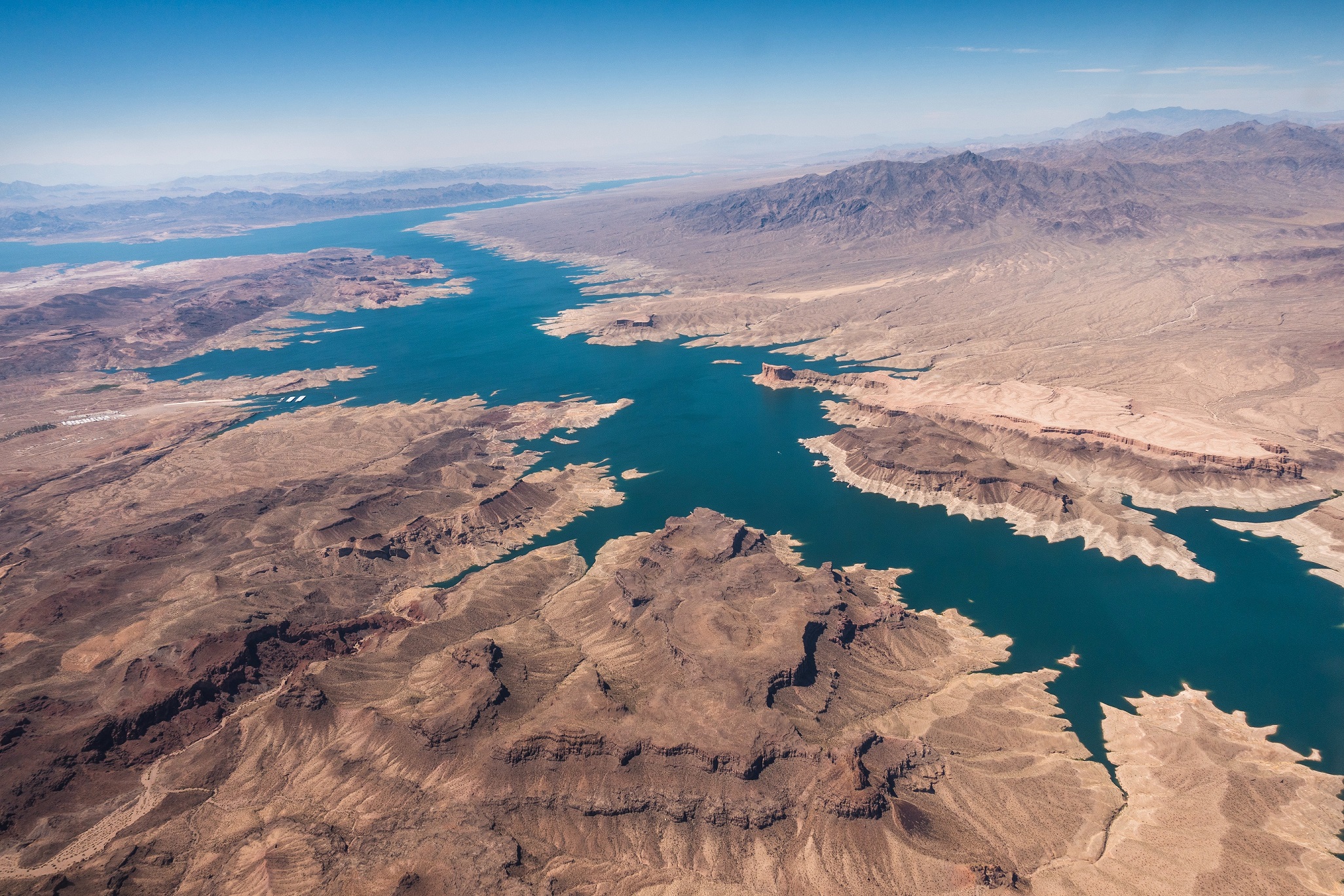As the Colorado River runs low, so too do rivers, lakes and tributaries around the world. It’s time for action, not debate or fighting, yet here we are.
We have known for quite some time that if we kept on the current industrial path, the climate would destabilize. Changing patterns of drought and rainfall were among the anticipated effects. Well, years of kicking the can down the road, a collective inability to make any significant departures from pursuing business as usual, the profit motive, political stonewalling, and the natural apathy that occurs when caring means we’d have to actually do something about the problem, have taken their toll. All over the world, people are learning the worth of water as the river runs low.
Water levels at Lake Mead and Lake Powell, along the Colorado river, are falling to critical levels. Southwestern states depending on the flow may be unable to maintain electric power generation, perhaps even regular water usage, for the foreseeable future. Last June, the federal government put the Colorado basin states on notice. If they couldn’t work together and come up with a plan to collectively cut 2 to 4 million acre-feet of water (equivalent to the annual household water use of 20-40 million people), the government would step in and make the cuts for them.
The drought continues whether the states involved can come up with a legally binding compromise or not. As Lake Mead runs low, inching closer than ever to deadpool status which would sink the whole system, the Department of the Interior imposed restrictions in line with the Drought Contingency Plan agreed to in 2019 by the seven states and Mexico in the case of a Tier 2 shortage. Arizona is taking the brunt of the cuts, automatically losing 21% of their annual share of Colorado river water. Nevada is losing 8% while Mexico’s portion is cut 7% as stipulated in a separate pact.

Arizona’s ranking water authorities issued a statement last week objecting to their already agreed-upon terms, claiming that it’s unacceptable for the state to “carry a disproportionate burden” while other states are not yet being forced to sacrifice. Senator Mark Kelly (D-AZ) also piped up to defend the agricultural sector and our national food security, but conveniently leaving off how much water the Saudi Arabian alfalfa farms in Arizona pump from underground, and how that water, if not left where it is as a future water source when the river stops working, could contribute to food security or replace household water cuts instead.
While last week’s cuts will be painful, they are, sadly, insufficient to solve the larger problem. Much like society at large has reacted to the need to change our way of life to stave off climate chaos, this, too, kicks the can down the road. Rather than the organized adaptation to a new, drier normal, which is what the thirsty Southwest needs to hash out, it’s merely a drop in the bucket, combined with irrational optimism that acrimonious polities will somehow come to the table and agree to put the screws to their own citizens, businesses, farms, tourist attractions and golf courses, for the greater good of all.
Listen closely, and you can hear climate deniers sharpening their arguments. “It’s just a drought,” they say, “not climate change! If it were climate change, we’d see this going on everywhere instead of just one river!”
And so it is.
One could be forgiven for connecting the Western drought not only to the Colorado river troubles, but also blaming it when the Rio Grande runs low, leaving New Mexico short, and Utah’s Great Salt Lake dries up and blows away.
How about the Rhine? Lakes in Switzerland, where the Rhine river begins, are lower than normal, causing problems downstream when ships that need five feet of water are stranded in foot-deep water as the Rhine runs low.
Tributaries to the Loire, in France, have dried up.
The Danube, Europe’s second longest river, is lower than the historical minimum, making it hard to navigate and damaging ecosystems.
Hunger stones, carved warnings about past famines that become visible as the river runs low, are emerging from the Elbe, which flows through central Europe. Some date back to 1150, 1417, 1616, 1857, and 1947, but people are less worried about them now than they perhaps should be. Food can always come from somewhere else, you know.
The source of the Thames, 90 miles west of London, England, has dried up for the first time since 1976.
Italy’s longest river, the Po, has completely disappeared in multiple places. Power stations are closed, fountains have shut down, and water restrictions are in place for everyday Italians.
Serbia’s main river, the Sava, is less than half as deep as normal.
The Maipo and Mapocho rivers in Chile are dwindling; water is being rationed.
China’s Yangtze is barely half as wide as it used to be, and ships have to carefully wind their way down the very middle of the river. Factories have had to close as hydropower became unreliable. Sixty-six other rivers in the Chongqing region alone have followed suit.
Israel is planning to pump desalinated water from the Mediterranean Sea to fill the Sea of Galilee, with pumps to make that water available to other, lower-level lakes in Israel (and neighboring Jordan, in exchange for solar power fed into the Israeli grid).
While politically-motivated Americans debate whether or not climate change is a real thing that is happening (spoiler: it is), others are taking needed action. Although California hasn’t currently been required to take cuts in Colorado river water usage, they’re already developing ways to purify and recycle water back into their dwindling supply, rather than waste it by flushing it out to sea. In England, they’re tossing around the idea of re-nationalizing the water supply. This is time for meaningful solutions that might manage to prioritize necessities (like drinking water and growing food, though hopefully not in the desert) rather than the nice-to-have amenities and amusements for the wealthy that we can no longer afford on a shrinking water budget.
So of course, we’ll fight about it, won’t we?
Related: Colorado River States to Face Reckoning
Sources:
Climate change and the aridification of North America
Let’s talk about the Rhine and recession….
Losing Earth: The Decade We Almost Stopped Climate Change
The feds declined to seriously cut Colorado River water use. Here’s what that means
Interior imposes limited water cuts, but lets Colorado River negotiations go into overtime
As talks on Colorado River water falter, U.S. government imposes new restrictions
‘Genuinely worried’: Why researcher fears Lake Mead could hit dead pool
Western States Blow Past Deadline to Come Up With a Water Conservation Plan
Mark Kelly: ‘So important that the other states step up’ in Southwest drought
Saudi water deal threatening water supply in Phoenix
Rio Grande Runs Dry in Albuquerque
Photos Show Shockingly Low Water at New Mexico’s Largest Reservoir
Great Salt Lake dry-up causing dangerous climate ripple effect, ecologists say
Rhine river runs dry
Dry rivers: Traffic backed up on Rhine as engine failure worsens woes
The Danube’s historically low water levels are damaging both the environment and the economy
Europe’s dry rivers reveal creepy “hunger stones”
The U.K. is so hot and dry, the source of the River Thames has dried up
Quiet flows the Po: the life and slow death of Italy’s longest river
Chile announces unprecedented plan to ration water as drought enters 13th year
Yangtze shrinks as China’s drought disrupts industry
Drought dries up river, kills crops in China
Lakes are drying up everywhere. Israel will pump water from the Med as a solution
‘Megadrought’ in West directly linked to climate change, experts say
Southern California Has A Plan To Ease The Colorado River Crisis. And It Starts Right Under Your Feet
Is it time to renationalise the water industry?


Join the conversation!